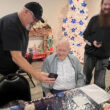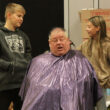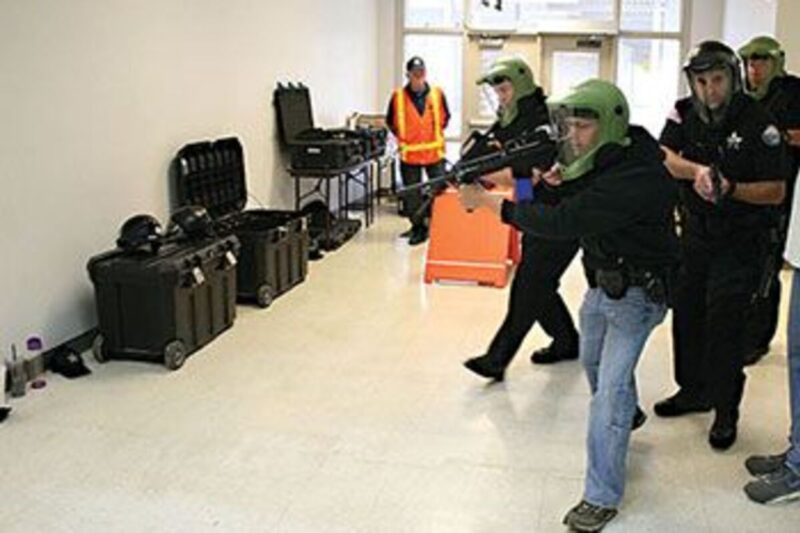Sean C. Morgan
Police officers swarmed the hallways at Sweet Home High School amid bursts of gunfire, but it was all for a good cause.
Sweet Home police and guests from other departments used the high school to spend two days drilling on how to stop active shooters.
The Oregon Department of Public Safety Standards and Practices conducted the training exercises on June 16 and 17.
“It’s been awhile since we’ve done active shooter training,” said Sweet Home Sgt. Jason Ogden. “With new techniques, training and new ways of doing things, we thought it’s always good to have a refresher on this stuff.”
He noted that Portland-area Reynolds High School just had a real active shooter.
With that in mind, he said, “we just want to get everyone on the same page.”
Participants spent time Monday morning taking classroom instruction, followed by role playing, and then they spent the rest of the day putting the tactics they learned into practice. Other police officers played the parts of active shooters, while students played victims in scenarios staged throughout the high school building. The officers used simunitions, cartridges that mark hits similar to a paintball, during the scenarios.
Sweet Home was able to run all but three of its officers through the training, Ogden said, and he will be looking for training opportunities for the three who had to miss it.
“Generally, what the training has been in the past, you want to get in there and take care of the threat as soon as possible,” Ogden said.
It’s still that way. During the training, instructors repeatedly told officers to stop the threat with overwhelming force – The primary mission is to stop the active shooter.
In a small town, it’s only one or two or a small handful of police officers who might be available in a real active shooter situation, Ogden said, and the training focused on these limitations and how to respond.
“(Scenarios are) based off of learning from incidents that actually happened,” said Lt. Greg Peterson, regional trainer with the DPSST.
Joining the police officers were Fire Chief Dave Barringer and Battalion Chief Shannon Pettner from Sweet Home Fire and Ambulance District.
“We’ve been trying to integrate them in active shooter training,” Peterson said. Across the nation, police officials and paramedics have been talking about the best way to get them into the building to help the wounded sooner.
“There’s a thought now that medics and people to retrieve victims have to go in earlier,” Barringer said. In the future, medics will need to be prepared to move into partially controlled situations. “You’re not going to want to let everybody bleed out in here.”
Watching the scenarios helps give medics an idea when it would be reasonably safe to go ahead and enter the scene of an active shooting, he said. “Knowing their role and the objective helps us understand where we’re going to fit in.”
Right now, no one has a really good answer how to integrate medics, Barringer said, but they’re working on it.
A small community like Sweet Home doesn’t have the resources readily available like larger cities, said SHHS Principal Keith Winslow. The city and community need to be involved, with plans in place. He said that local agencies are planning to meet and create a plan for dealing with such an emergency.
The School District has emergency plans and lockdown procedures, Winslow said. “We need to have a community-wide plan that is updated regularly.”





